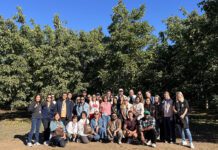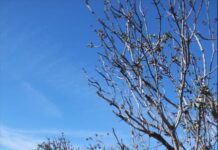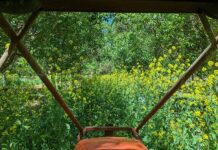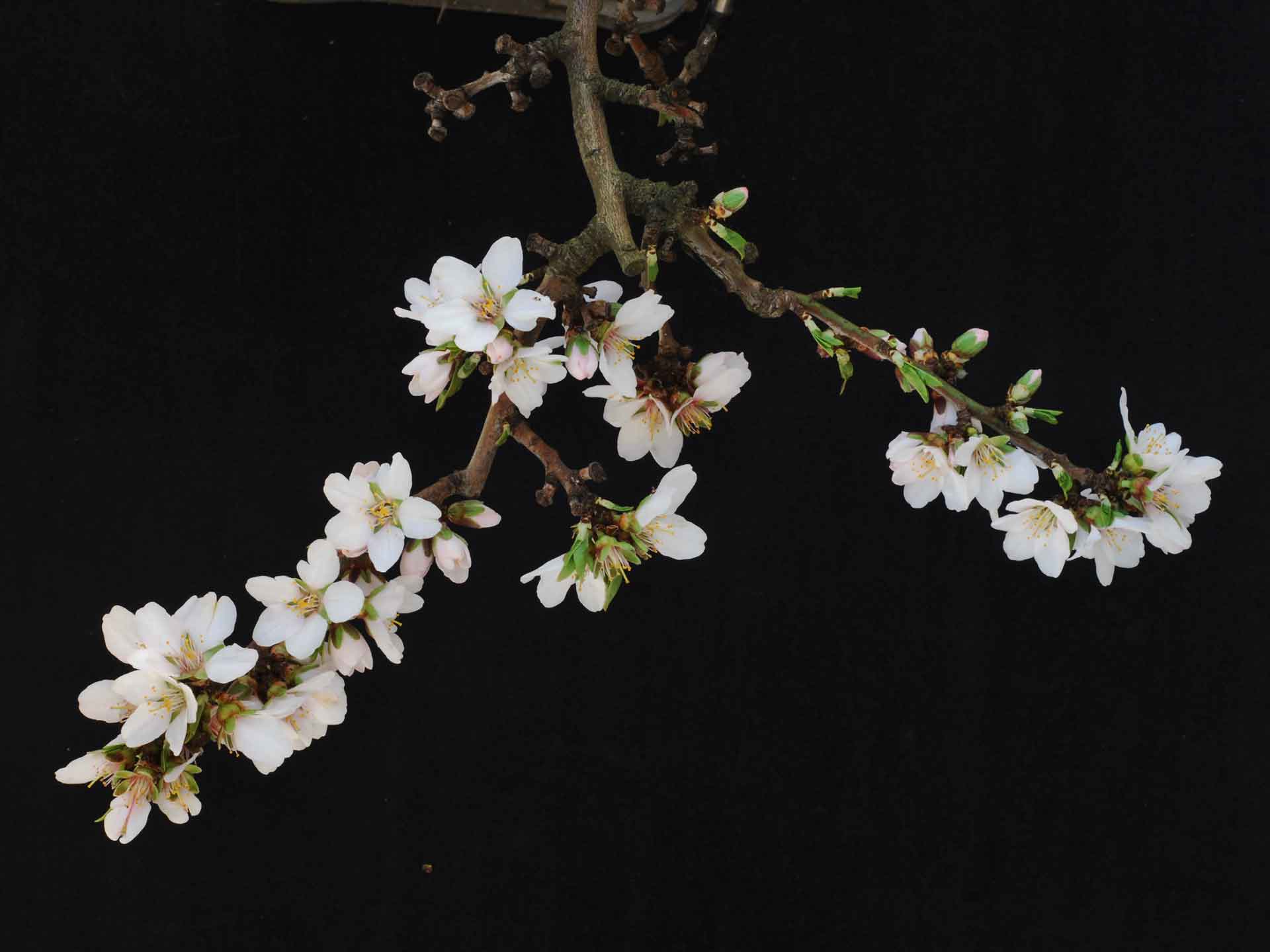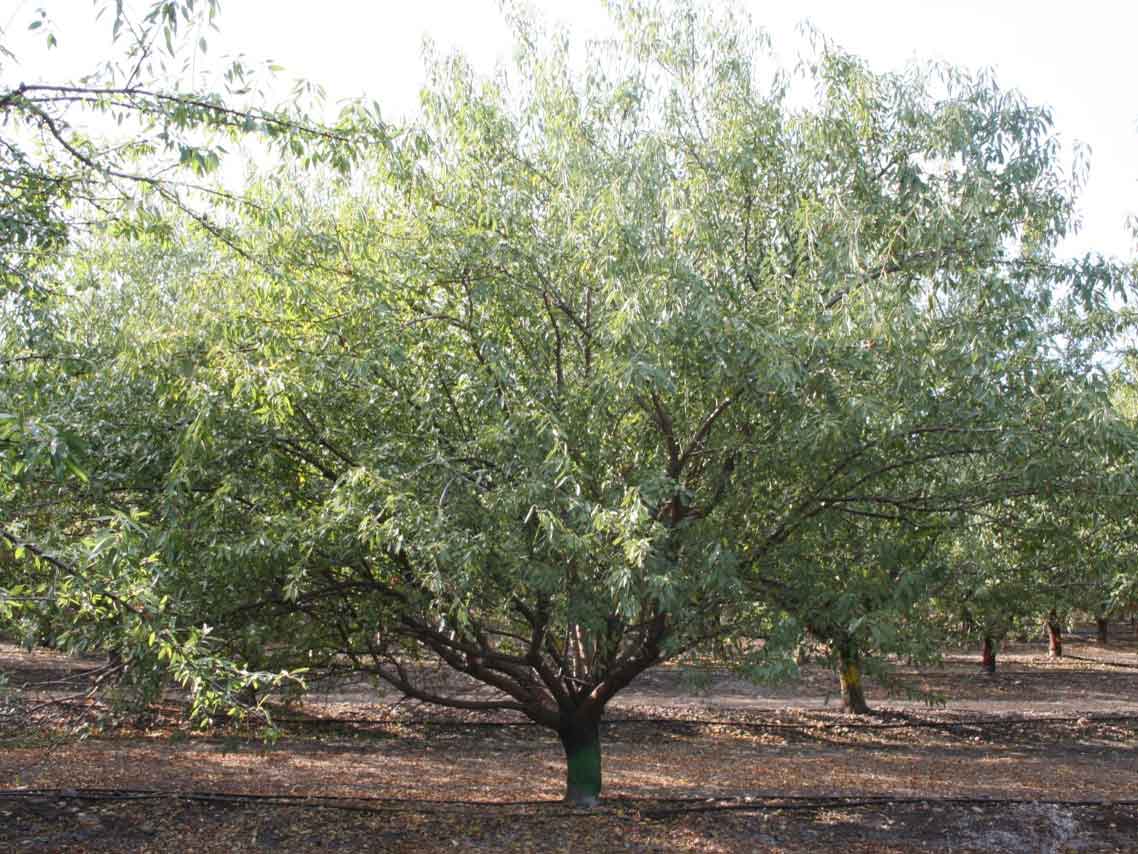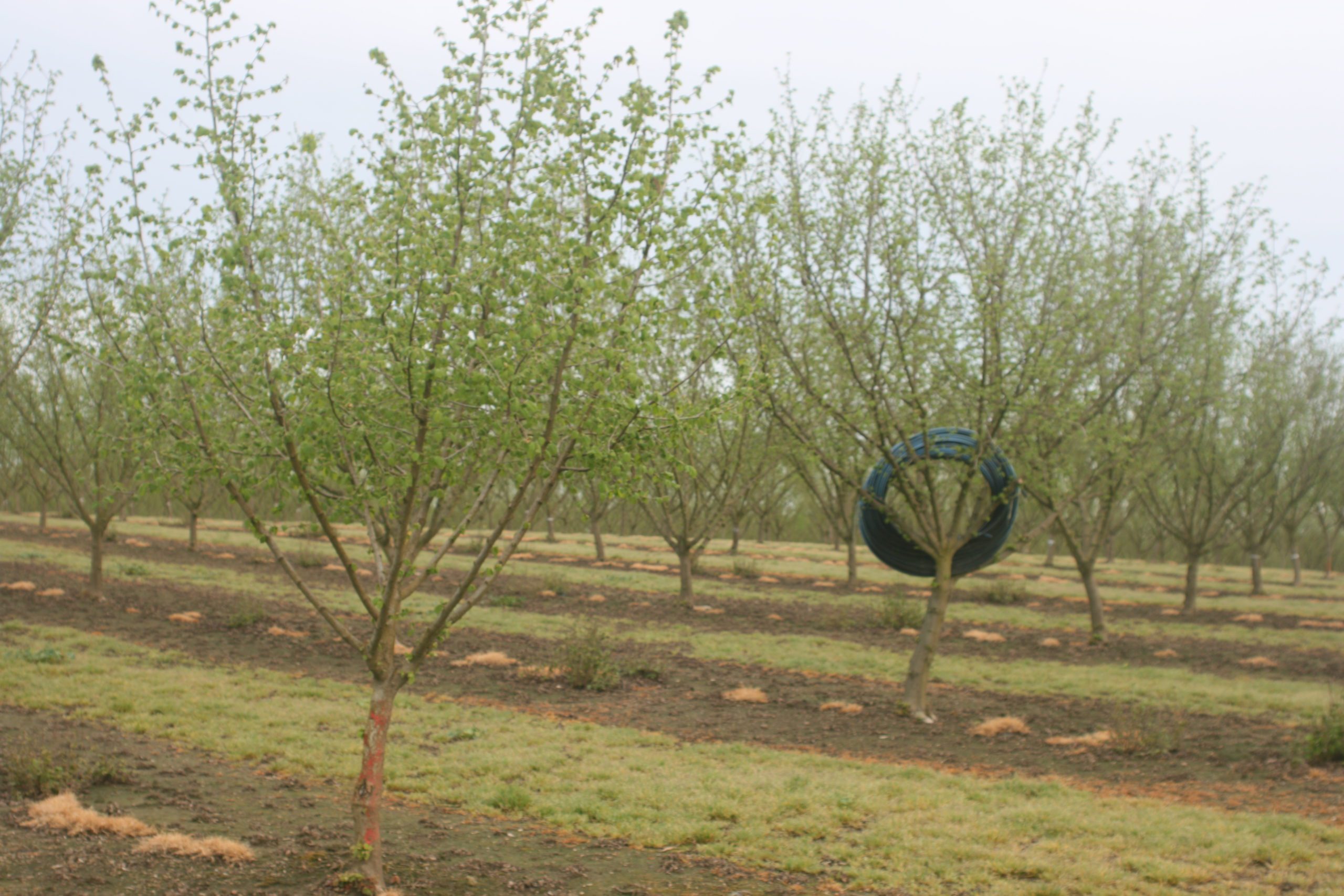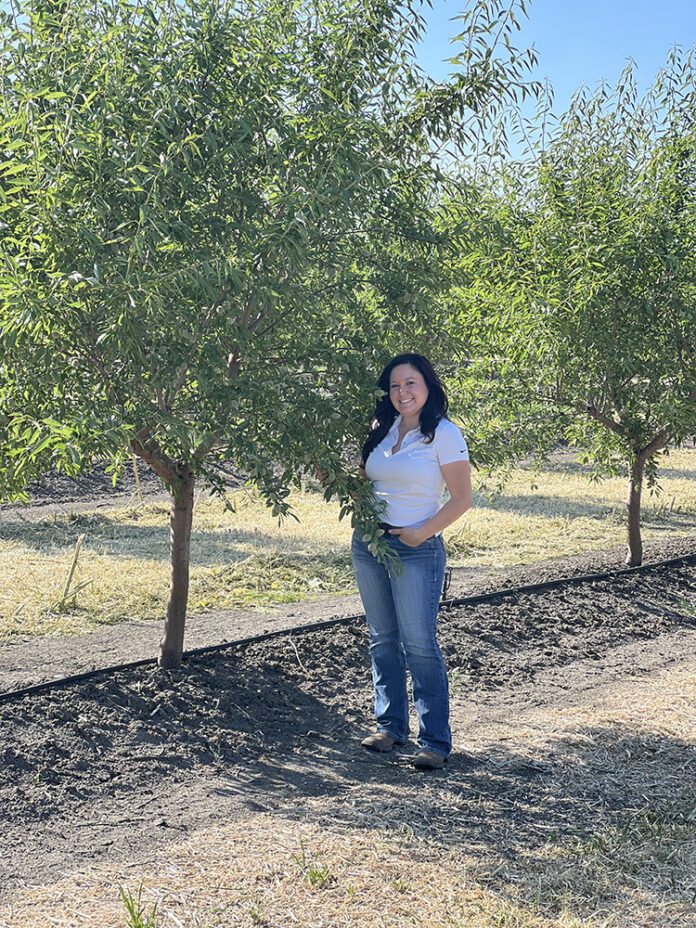
In a Nutshell: Listen to the Summary
Alexis Harvey isn’t your typical almond grower. In addition to tending to the 40 acres of almonds at Bedoya Orchards, she’s a PCA for Grow West and helps manage her family’s 10,000 beehives.
While her family has been involved in beekeeping since she graduated from college, they didn’t decide to plant their own orchard until 2021. This year will be their first harvest, and while they are hoping to turn a profit on their almonds, one of the main reasons she and her dad decided to plant almonds was to benefit the bees.
“Ultimately, we’re trying to help,” she says. “We want to help contribute to best management practices and research of orchard practices that benefit pollinators. By adopting these practices in our orchard, it allows us to show our growers a real-life example without needing to invest fully on their own.”
With such a unique perspective, we asked Alexis to share her thoughts on the California tree nut industry with West Coast Nut.
Q. How did you get into tree nut farming?
I grew up in Dixon, which is where we’re located. I was always involved in 4-H and FFA, which is where my love of agriculture began. My dad’s family farms in South America, in Bolivia. He attended UC Davis and started working for Growers Ag Service as a field person for the chemical company, and from there, he grew in his knowledge of the ag industry. I attended Chico State and started studying agriculture crop science. That’s when we decided to research investment opportunities.
We came upon beekeeping. We had a lot of contacts in the industry, so we started our apiary with only 50. Now, we run about 10,000 hives. We do brokering also, so we run about 30,000 hives in almonds during pollination season.
These past couple of years, we’ve been trying to find property where we could look at new practices in regards to beekeeping: provide better food options for pollinators and plant more orchards of our own.
Our first block is at my parents’ house, and it’s only 40 acres. We’ve been actively trying to do cover cropping and getting involved in different programs. The Solano County Farm Bureau right now is doing the State Water Efficiency and Enhancement Program as well as the Healthy Soils Program. We were awarded a grant through HSP to implement a cover crop, composting and a pollinator hedgerow. This funding allows us to experiment with new practices so we could try it out and give feedback to others who may be interested in the future.
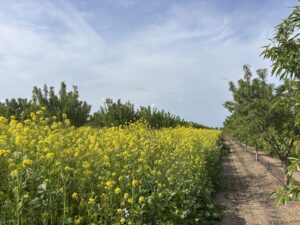
Q. So you started growing almonds to benefit the bees?
Our family, in general, has been very involved in agriculture our whole life. Yes, we want to benefit the bees, but we also want to be an example for those farming around us and show that we can execute best management practices and have a successful orchard. Not only that, but having an orchard allows us to see the hardships our customers face firsthand. This keeps us grounded and in touch with our growers.
In terms of BeeWhere notifications, I have the grower portal, the PCA portal and the beekeeper portal, so I get to experience many things like bee notifications from many points of view, giving me unique insight on how to improve these programs.
Q. Talk a little about what it’s like to be a new grower, especially when it comes to finding land.
It’s really hard. That’s the biggest hurdle. We only have 40 acres. My parents’ house is on that 40 acres, and it’s always been alfalfa or grass cut for hay, so it has been quite an investment. The work that had to be done in order to put the trees in alone is expensive. You either have to have a great bank loan or a good funding source. My family is fortunate to have the experience of farming in California.
However, our area here in Solano County is a big growth area when it comes to trees. A lot of people are putting trees in. There are numerous investment groups purchasing larger pieces of property and planting trees. They’re paying top dollar per acre, much more than any of these acreages have ever been sold for in the past, so it makes it really hard to purchase agricultural land.
Q. What’s the learning curve on starting a new orchard?
I’ve seen quite a few orchards being put in as part of my job as a PCA. One of my first customers, my junior year in college, put in their first orchard, and I got to see that full planting process. Now that orchard is 14 years old, and I have been able to see the life of this orchard and many like it.
I have gotten to experience management decisions and the hard work and labor that goes into these orchards over the years.
Having been able to see different growers put in their orchards and experience the different tweaks that all of them take, because one thing I’ve learned about farming is that everybody does it differently, being able to see those options of, “Okay, why did you choose that?” and “Okay, I understand that,” or, “No, that wouldn’t really work for me,” I kind of got to pick and choose from all of these different farmers who influenced my job as a PCA and choose what works best for us.
Q. Your dynamic is different because you’re trying to create this habitat for the bees and test out things that you would like for your growers to do. How much do you have to balance that against creating a profitable crop?
We are definitely learning, but it is important to us to have a profitable orchard while experimenting. Right now, we put in a cover crop that was a mustard mix and a clover combined, and it’s taller than me. It’s going to be a great food source for the bees (we’re super excited about that) but it’s also going to be a problem during harvest. At the end of this year, we’re going to look at the biomass and might realize we didn’t mow it in time, or we let it get too tall and it got out of hand.
We are also looking at what’s the pro versus the con. How much extra did we have to pay for harvesting fees to load those nuts and get them hauled out? Even though it was really dirty loads, was it worth having the extra food for the bees a little bit longer? That’s something we’re going to try to put a number to.
What we do is not going to make sense for all growers. It might be something where we’re able to say, “Hey, this isn’t the right blend for you because it doesn’t make sense for you.” It made sense for us, but only because we’re saving the cost of some bee food on these 200 hives. Those are the kinds of things I want to play with and tweak.
Definitely, finding funding within government programs is helping us play with it a little bit more. At the same time, we do need to be a profitable orchard, so we certainly need to find that balance.
Q. What other things are you doing that might be slightly different than what you would see in a typical orchard?
We’re putting in pollinator-friendly hedgerows on our property and planting cover crops with the help of the Healthy Soils Program. I’ve also adopted spraying at night instead of during the day, especially when the bees are in the field.
Our property is used as a holding yard for hives, so year-round we’re trying to take that same approach where we’re doing applications at night using best management practices from the California Almond Board. It makes it a lot easier to adopt these practices with multiple points of view (grower, beekeeper and PCA).
We have also started to work with Beewise, a company that created an AI beehive, the BeeHome. We will experiment with the use of these hives in our orchard to help increase pollination flight hours, reduce effects of pesticide applications on the hives, and monitor hive strength throughout almond pollination season.
Q. How hard is it to switch hats from beekeeper to almond grower to PCA? And how often do those things conflict?
Switching hats is not difficult. These industries are very intertwined. I believe that it is very important that growers, PCAs and beekeepers maintain good relationships and communication in order to have optimal outputs in our orchards. A lot of times, I’m driving between fields, walking fields or walking into a bee yard, and a lot of the things are very intermingled. I’d say it’s hard to separate them because I am constantly switching hats. Instead of wasting my time going back and forth, I try to get work in specific areas while I’m in the region. It takes a lot of awareness of what’s in the area and planning what I’m doing ahead of time.
In terms of the orchard, we do a lot of our management practices last, which is probably a horrible way to manage it. When it comes to many things like pollination for the orchard this year, I’m the last person — the last orchard — that I put hives into. I wanted our customers to know that we’re looking out for them first. We’re going to get them ready and going first, and then we’ll take care of our orchard after.
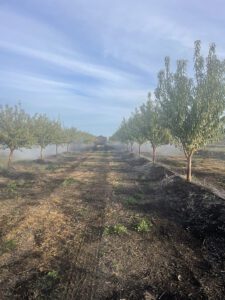
Q. What are some of the things that keep you as a grower up at night?
Tariffs are going to be a huge issue for much of the California agriculture industry. We have growers that we work with whose markets are all overseas. We really don’t know exactly how they will affect nut sales, so it is something that is certainly top of mind right now.
Labor is also a big issue. I’m more worried about labor from the bee perspective because we have a lot of specialized workforce, but it goes the same for the trees. Our orchard is young and requires skilled labor that is often hard to find and continually decreasing.
Water, having a reliable source for myself as well as those throughout the county. Having a quality and consistent water source, whether it is surface or groundwater, is very uncertain in recent years.
Q. What do you think is the most hopeful thing about the future of the tree nut industry?
In terms of pricing, if you look at the cycles throughout the years, they always have a low, and they always come back up, right? I’m just trying to be positive. You struggle when everything is low and down, but it’ll turn around. We are looking to the future and knowing that it will get better. It can’t get worse.
Luckily for us, when we were putting in, we were thinking about multiple different tree nut crops. We put in at a time when the price was down, so we’re hoping by the time we start harvesting, we’ll have a higher price. I think it’ll just take time.
Obviously, with many problems such as labor, tariffs, water and many more, we do need legislation to help. That’s why I’m very involved in the California Farm Bureau and a member of the California Farm Bureau Leadership Team for 2025. I want to help influence decisions that are being made for the agricultural industry. This program has helped grow my knowledge of our government’s impacts and has made me more confident in the ways I can help positively influence our industry for the better.
Q. What advice would you offer to someone else who’s thinking, “I want to get into growing tree nuts”?
Just be patient and know that a lot of the decisions you make in those early years, even though you’re not making income, affect the lifetime of the orchard. Spend the money.
Do it correctly the first time. Don’t try to skimp. You’ll just give yourself a bigger headache in the future.
I know it’s hard to say when you’re not making income on a property, but usually doing it the right way, instead of doing it the easy way, is always the best way.






